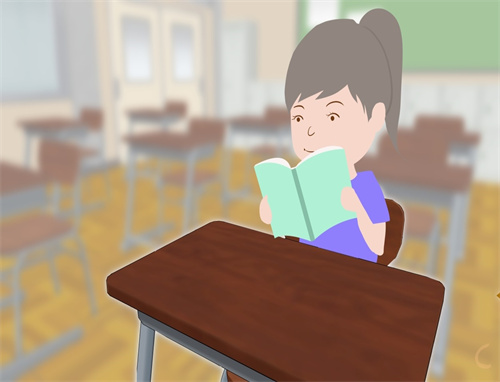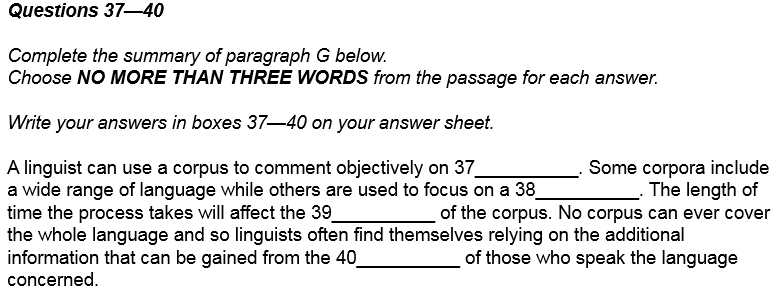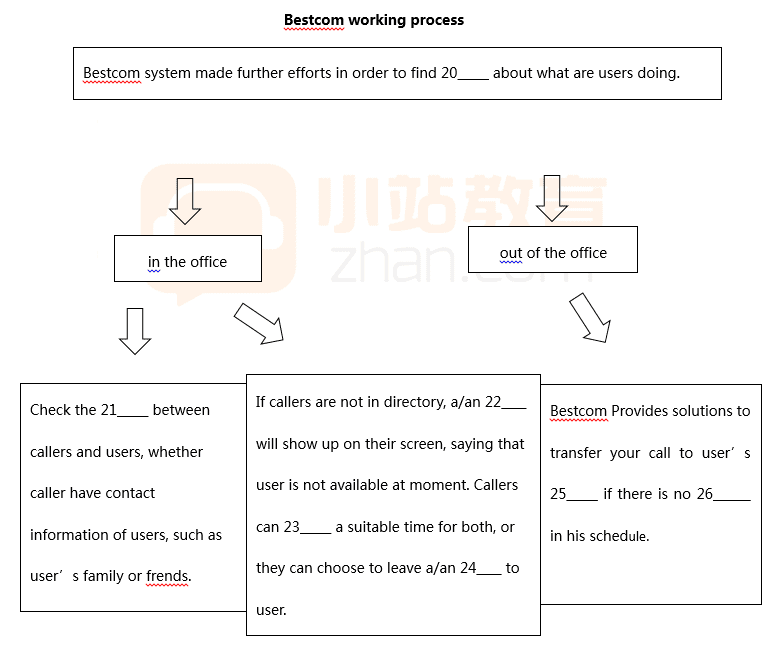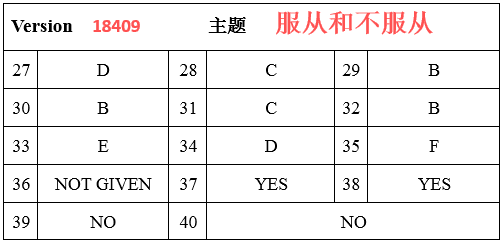托福阅读的三种常见题型有哪些?今天小编给大家带来了托福阅读的三种常见题型有哪些,希望能够帮助到大家,下面小编就和大家分享,来欣赏一下吧。
托福阅读的三种常见题型有哪些
托福阅读文章可分为不同类型,新托福阅读考试的句按类型可分为:开门见山型、标靶型和导入型三类。托福阅读备考中,无论是哪种题型,每段句都非常重要。这三个类型有不同的答题方法,根据类型进行解题,更有针对性。
所谓开门见山型,即指文章直接推出论点,表达文章的中心思想或主题走向。开门见山型的特征往往为定义型句子。一般都较为简短有力,富有哲理性,不超过两行。文章如属于开门见山型,则主题的确立自不待言。
所谓标靶型,即作者在起笔处先推出某个错误的论点或看法,然后加以批驳,给出作者所持的相反或相对立的观点。标靶型语句的特征往往为:“人们常常以为……”、“一般说来……”、“据称……”。遇到标靶型语句时,只要句作相反理解,即可确知文章的主旨。
所谓导入型,即作者先隐下主题思想不说,从别的细碎的地方谈起,渐渐接入正题。导入型的语句一般较为琐碎具体,甚至具体到某年某月。有时也纯为挑起读者的好奇心而设。如″American firms have a prob?″什么问题呢?作者只字不提。导入型语句尽管隐藏了主题思想,但文章的脉络、所涉及的范围依然清晰可见。如上句的举例,讨论的关键肯定在 problem,范围局限在美国公司。
当然,新托福阅读考试题的分类并不是的,有时我们也可看到几种类型缠绕在一起的句子。
托福阅读的重点关键在于:读完句后,应能确定文章的中心思想,即或不能,也应尽可能地把握文章的讨论走向。完成了这一点,也就完成了初步阅读。剩下的就是在中心思想或文章的主题走向的指导下去做选择项了。
托福阅读真题原题+题目
The end of the nineteenth century and the early years of the twentieth century were marked by the development of an international Art Nouveau style, characterized by sinuous lines, floral and vegetable motifs, and soft evanescent coloration. The Art Nouveau style was an eclectic one, bringing together elements of Japanese art, motifs of ancient cultures, and natural forms. The glass objects of this style were elegant in outline, although often deliberately distorted, with pale or iridescent surfaces. A favored device of the style was to imitate the iridescent surface seen on ancient glass that had been buried. Much of the Art Nouveau glass produced during the years of its greatest popularity had been generically termed art glass. Art glass was intended for decorative purposes and relied for its effect upon carefully chosen color combinations and innovative techniques.
France produced a number of outstanding exponents of the Art Nouveau style; among the most celebrated was Emile Galle (1846-1904). In the United States, Louis Comfort Tiffany (1843-1933) was the most noted exponent of this style, producing a great variety of glass forms and surfaces, which were widely copied in their time and are highly prized today. Tiffany was a brilliant designer, successfully combining ancient Egyptian, Japanese, and Persian motifs.
The Art Nouveau style was a major force in the decorative arts from 1895 until 1915, although its influence continued throughout the mid-1920's. It was eventually to be overtaken by a new school of thought known as Functionalism that had been present since the turn of the century. At first restricted to a small avant-garde group of architects and designers, Functionalism emerged as the dominant influence upon designers after the First World War. The basic tenet of the movement — that function should determine form — was not a new concept. Soon a distinct aesthetic code evolved: form should be simple, surfaces plain, and any ornament should be based on geometric relationships. This new design concept, coupled with the sharp postwar reactions to the styles and conventions of the preceding decades, created an entirely new public taste which caused Art Nouveau types of glass to fall out of favor. The new taste demanded dramatic effects of contrast, stark outline and complex textural surfaces.
1. What does paragraph 1 mainly discuss?
(A) Design elements in the Art Nouveau style
(B) The popularity of the Art Nouveau style
(C) Production techniques for art glass
(D) Color combinations typical of the Art Nouveau style
2. The word one in line 4 refers to
(A) century
(B) development
(C) style
(D) coloration
3. Paragraph 1 mentions that Art Nouveau glass was sometimes similar to which aspect of ancient buried glass ?
(A) The distortion of the glass
(B) The appearance of the glass surface
(C) The shapes of the glass objects
(D) The size of the glass objects
4. What is the main purpose of paragraph 2?
(A) to compare different Art Nouveau styles
(B) to give examples of famous Art Nouveau artists
(C) to explain why Art Nouveau glass was so popular in the United States
(D) to show the impact Art Nouveau had on other cultures around the world
5. The word prized in line 16 is closest in meaning to
(A) valued
(B) universal
(C) uncommon
(D) preserved
6. The word overtaken in line 20 is closest in meaning to
(A) surpassed
(B) inclined
(C) expressed
(D) applied
7. What does the author mean by stating that function should determine form (lines 23-24)?
(A) A useful object should not be attractive.
(B) The purpose of an object should influence its form.
(C) The design of an object is considered more significant than its function.
(D) The form of an object should not include decorative elements.
8. It can be inferred from the passage that one reason Functionalism became popular was that it
(A) clearly distinguished between art and design
(B) appealed to people who liked complex painted designs
(C) reflected a common desire to break from the past
(D) was easily interpreted by the general public
9. Paragraph 3 supports which of the following statements about Functionalism?
(A) Its design concept avoided geometric shapes.
(B) It started on a small scale and then spread gradually.
(C) It was a major force in the decorative arts before the First World War.
(D) It was not attractive to architects and designers.
10. According to the passage , an object made in the Art Nouveau style would most likely include
(A) a flowered design
(B) bright colors
(C) modern symbols
(D) a textured surface
PASSAGE 28 ACBBA ABCBA
托福阅读真题原题+题目
The mineral particles found in soil range in size from microscopic clay particles to large boulders. The most abundant particles — sand, silt, and clay — are the focus of examination in studies of soil texture. Texture is the term used to describe the composite sizes of particles in a soil sample, typically several representative handfuls.
To measure soil texture, the sand, silt, and clay particles are sorted out by size and weight. The weights of each size are then expressed as a percentage of the sample weight. In the field, soil texture can be estimated by extracting a handful of soil and squeezing the damp soil into three basic shapes; (1) cast, a lump formed by squeezing a sample in a clenched fist; (2) thread, a pencil shape formed by rolling soil between the palms; and (3) ribbon, a flatfish shape formed by squeezing a small sample between the thumb and index finger. The behavioral characteristics of the soil when molded into each of these shapes, if they can be formed at all, provide the basis for a general textural classification. The behavior of the soil in the hand test is determined by the amount of clay in the sample. Clay particles are highly cohesive, and when dampened, behave as a plastic. Therefore the higher the clay content in a sample, the more refined and durable the shapes into which it can be molded.
Another method of determining soil texture involves the use of devices called sediment sieves, screens built with a specified mesh size. When the soil is filtered through a group of sieves, each with a different mesh size, the particles become grouped in corresponding size categories. Each category can be weighed to make a textural determination. Although sieves work well for silt, sand, and larger particles, they are not appropriate for clay particles. Clay is far too small to sieve accurately; therefore, in soils with a high proportion of clay, the fine particles are measured on the basis of their settling velocity when suspended in water. Since clays settle so slowly, they are easily segregated from sand and silt. The water can be drawn off and evaporated, leaving a residue of clay, which can be weighed.
1. What does the passage mainly discuss?
(A) Characteristics of high quality soil
(B) Particles typically found in most soils
(C) How a high clay content affects the texture of soil
(D) Ways to determine the texture of soil
2. The author mentions several representative handfuls in line 4 in order to show
(A) the range of soil samples
(B) the process by which soil is weighed
(C) the requirements for an adequate soil sample
(D) how small soil particles are weighted
3. The phrase sorted out in line 5 is closest in meaning to
(A) mixed
(B) replaced
(C) carried
(D) separated
4. It can be inferred that the names of the three basic shapes mentioned in paragraph 2 reflect
(A) the way the soil is extracted
(B) the results of squeezing the soil
(C) the need to check more than one handful
(D) the difficulty of forming different shapes
5. The word dampened in line 14 is closest in meaning to
(A) damaged
(B) stretched
(C) moistened
(D) examined
6. Which of the following can be inferred from the passage about a soil sample with little or no
clay in it?
(A) It is not very heavy.
(B) It may not hold its shape when molded.
(C) Its shape is durable
(D) Its texture cannot be classified
7. The word they in line 21 refers to
(A) categories
(B) sieves
(C) larger particles
(D) clay particles
8. It can be inferred from the passage that the sediment sieve has an advantage over the hand
test in determining soil texture because
(A) using the sieve takes less time
(B) the sieve can measure clay
(C) less training is required to use the sieve
(D) the sieve allows for a more exact measure
9. During the procedure described in paragraph 3, when clay particles are placed into water they
(A) stick to the sides of the water container
(B) take some time to sink to the bottom
(C) separate into different sizes
(D) dissolve quickly
10. The word fine in line 24 is closest in meaning to
(A) tiny
(B) many
(C) excellent
(D) various
11. All of the following words are defined in the passage EXCEPT
(A) texture (line 3)
(B) ribbon (line 10)
(C) sediment sieves (line 18)
(D) evaporated (line 25)
PASSAGE 27 DADBC BBDBA D
托福阅读的三种常见题型有哪些相关文章:
★ 雅思和托福的区别
★ 在3个月之内准备托福,达到100+
托福阅读的三种常见题型有哪些
上一篇:托福阅读备考之代词的应用
下一篇:针对托福阅读中常见的问题解答






